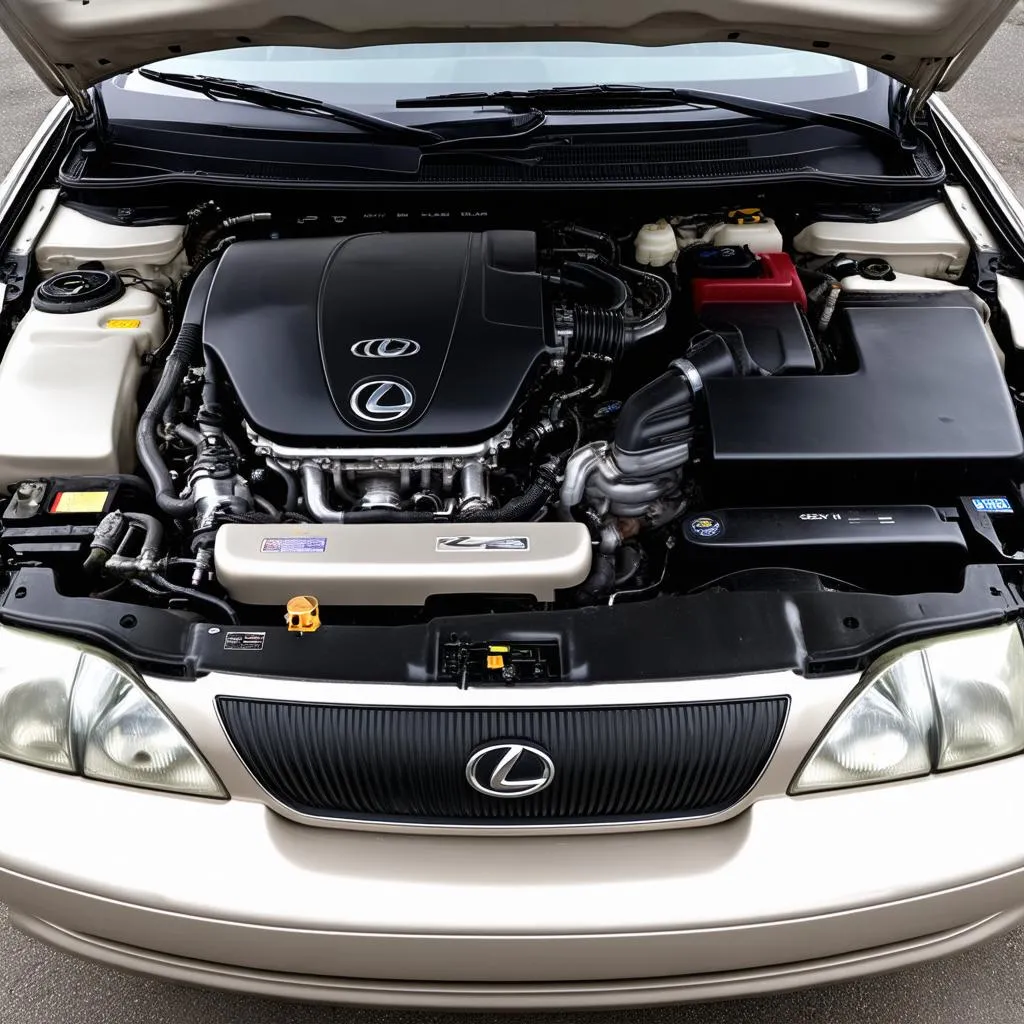Imagine this: you’re cruising down the Pacific Coast Highway in your trusty 2000 Lexus ES300, the California sun warming your face. Suddenly, the “Check Engine” light throws a wrench in your idyllic drive. You pull over, heart sinking, and reach for your trusty OBD-II scanner. The dreaded P1130 code stares back at you. What does it mean? Is your beloved Lexus on the verge of a catastrophic breakdown?
Don’t panic! This comprehensive guide is here to unravel the mystery of the P1130 code and provide you with the knowledge to tackle this common issue head-on.
Understanding the P1130 Code
The P1130 code, specifically for your 2000 Lexus ES300, indicates a problem with the Air/Fuel Ratio (A/F) sensor circuit malfunctioning in Bank 1 Sensor 1. Let’s break down what this means:
- Bank 1: Refers to the side of the engine containing cylinder #1.
- Sensor 1: This is the upstream oxygen sensor, located before the catalytic converter.
- Air/Fuel Ratio (A/F) Sensor: This crucial sensor monitors the amount of oxygen in the exhaust gases, helping the engine computer (ECU) adjust the air/fuel mixture for optimal performance and emissions control.
What Causes a P1130 Code?
A P1130 code in your Lexus ES300 can be triggered by several culprits:
- Faulty A/F Sensor: Over time, the sensor can wear out or become contaminated, leading to inaccurate readings.
- Wiring Problems: Damaged, corroded, or loose wiring in the sensor circuit can disrupt the signal.
- Vacuum Leaks: Any leaks in the intake manifold or vacuum hoses can introduce unmetered air, confusing the sensor.
- Fuel System Issues: Problems like a clogged fuel filter, failing fuel pump, or leaking fuel injectors can affect the air/fuel mixture.
- ECU Malfunction: While less common, a faulty ECU can also trigger this code.
Troubleshooting and Fixing the P1130 Code
Before you rush to the mechanic, here are some steps you can take to troubleshoot and potentially fix the P1130 code:
- Inspect the A/F Sensor: Visually examine the sensor for any damage, dirt, or debris. If necessary, carefully clean it with an electrical contact cleaner.
- Check the Wiring: Trace the sensor wiring harness for any signs of fraying, burns, or loose connections. Repair or replace any damaged components.
- Inspect for Vacuum Leaks: Use a carburetor cleaner or a smoke machine to check for leaks in the intake manifold, vacuum hoses, and gaskets.
- Consider a Fuel System Check: If you suspect a fuel-related issue, have a mechanic inspect your fuel filter, pump, and injectors.
Expert Insights
Renowned automotive engineer, Dr. Emily Carter, emphasizes the importance of addressing this code promptly, stating, “A malfunctioning A/F sensor not only affects your car’s performance and fuel efficiency but can also lead to catalytic converter damage in the long run.”
Frequently Asked Questions
Q: Can I still drive my car with a P1130 code?
A: While you might be able to drive for a short distance, it’s not recommended. Driving with a faulty A/F sensor can damage your catalytic converter and lead to decreased fuel economy and engine performance.
Q: How much does it cost to fix a P1130 code?
A: The repair cost depends on the underlying cause. A simple sensor replacement might cost a few hundred dollars, while a more complex issue like a faulty ECU could cost significantly more.
Q: Can I replace the A/F sensor myself?
A: If you’re comfortable with basic car maintenance, replacing the sensor yourself is doable with the right tools and a service manual. However, if you’re unsure, it’s best to consult a qualified mechanic.
 Lexus ES300 Engine
Lexus ES300 Engine
Related Questions and Concerns
Here are some other questions you might have related to the P1130 code:
- What is the difference between an oxygen sensor and an air/fuel ratio sensor?
- How often should I replace my oxygen sensors?
- What are the symptoms of a bad catalytic converter?
 Car Repair
Car Repair
Need Help with Your Lexus ES300?
Are you still grappling with the P1130 code or other automotive mysteries? Don’t hesitate to reach out to our team of expert technicians for personalized assistance. Contact us via WhatsApp at +84767531508 – we’re available 24/7 to help you get back on the road with confidence.
Conclusion
The P1130 code, while initially alarming, doesn’t have to spell doom for your 2000 Lexus ES300. By understanding its meaning, potential causes, and troubleshooting steps, you can address the issue effectively. Remember, regular maintenance and addressing warning signs promptly can save you from costly repairs and keep your Lexus purring like a kitten for miles to come.
We encourage you to share your experiences, questions, and tips in the comments below. Your insights might just help a fellow Lexus owner navigate their own automotive adventures.